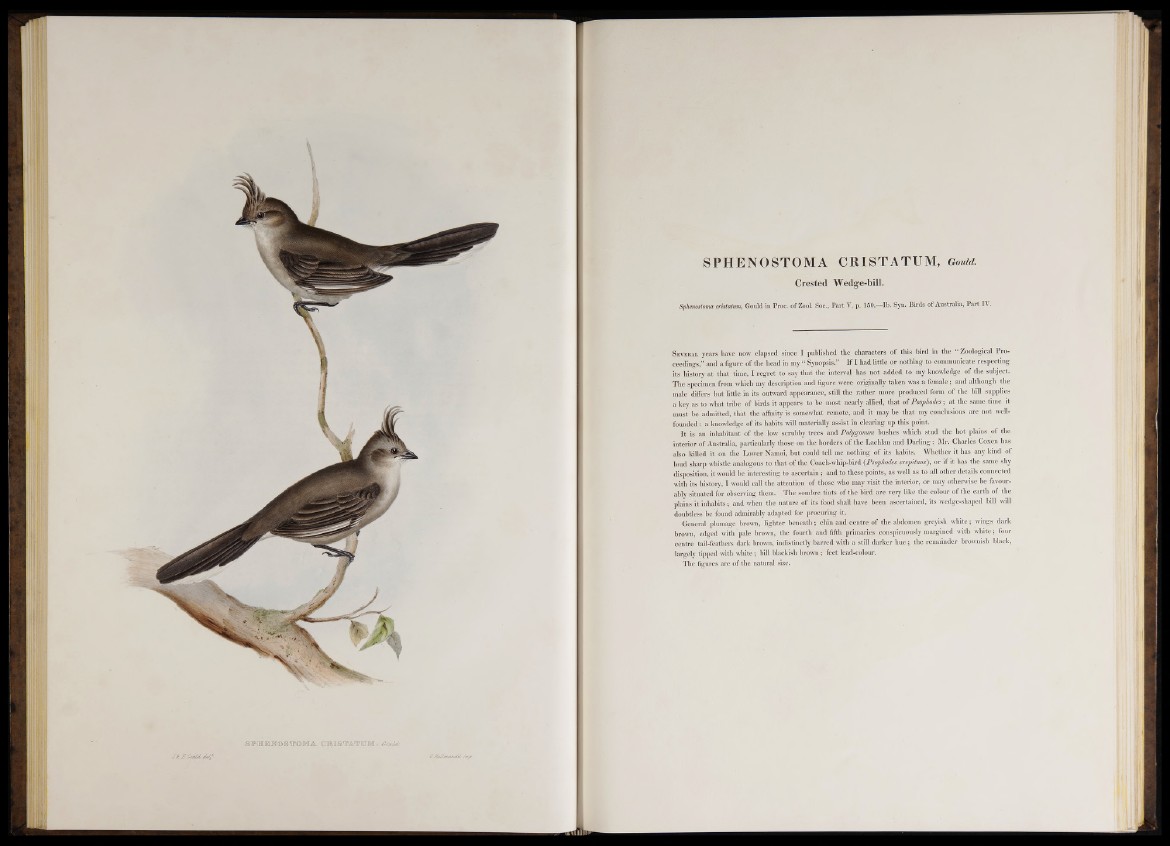
SPIHIlE.K'OSTtDMA CB.ISTATHTM* GowlcO.
SPHENOSTOMA CRISTATUM, Oonid.
Crested Wedge-bill.
Sphenostoma cristatum, Gould in Proc. of Zool. Soc., Part V. p. 150.—lb. Syn. Birds of Australia, Part IV.
S everal years have now elapsed since I published the characters o f this bird in the “ Zoological Proceedings,”
and a figure o f the head in my “ Synopsis.” I f I had little or nothing to communicate respecting
its history at that time, I regret to say that the interval has not added to my knowledge o f the subject.
The specimen from which my description and figure were originally taken was a female; and although the
male differs hut little in its outward appearance, still the rather more produced form of the bill supplies
a key as to what tribe o f birds it appears to be most nearly allied, that o f Psophodes; at the same time it
must be admitted, that the affinity is somewhat remote, and it may be that my conclusions are not well-
founded : a knowledge of its habits will materially assist in clearing up this point.
It is an inhabitant o f the low scrubby trees and Polygonum bushes which stud the hot plains of the
interior o f Australia, particularly those on the borders o f the Lachlan and Darling: Mr. Charles Coxen has
also killed it on the Lower Namoi, hut could tell me nothing o f its habits. Whether it has any kind of
loud sharp whistle analogous to that o f the Coach-whip-bird (Psophodes crepitans), or if it has the same shy
disposition, it would be interesting to ascertain; and to these points, as well as to all other details connected
with its history, I would call the attention o f those' who may visit the interior, or may otherwise be favourably
situated for observing them. The sombre tints o f the bird are very like the colour o f the earth o f the
plains it inhabits; and when the nature o f its food shall have been ascertained, its wedge-shaped bill will
doubtless be found admirably adapted for procuring it.
General plumage brown, lighter beneath; chin and centre of the abdomen greyish white; wings dark
brown, edged with pale brown, the fourth and fifth primaries conspicuously margined with white; four
centre tail-feathers dark brown, indistinctly barred with a still darker h u e ; the remainder brownish black,
largely tipped with white; bill blackish brown; feet lead-colour.
The figures are of the natural size.